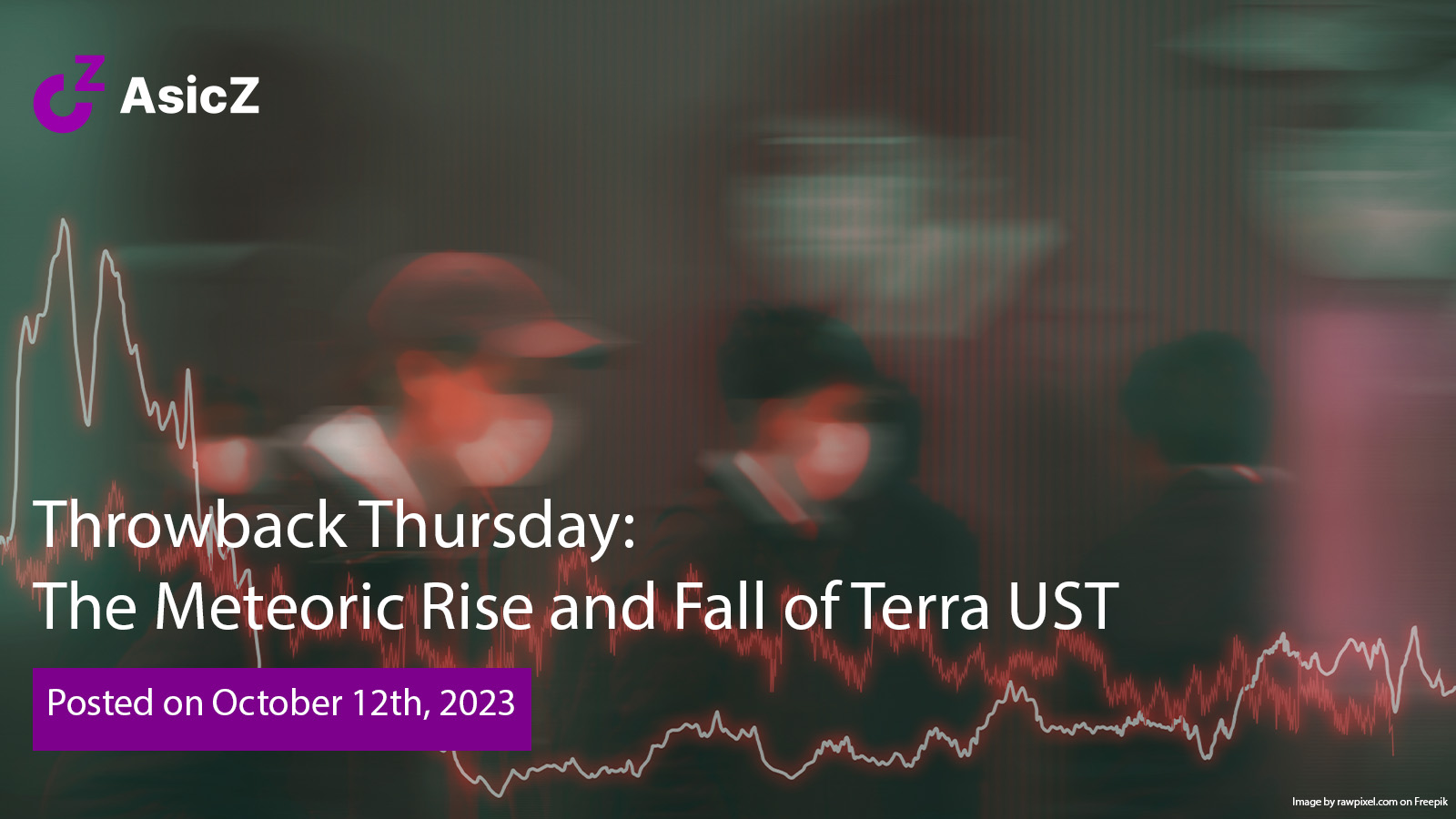This week’s Throwback Thursday we take a look back into the riveting narrative of Terra’s UST and Luna, exploring the intricate dynamics of their meteoric rise, catastrophic fall, and the community’s journey towards recovery and resurgence. Join us as we traverse through this compelling chapter in crypto history, unraveling the lessons, insights, and foresights encapsulated within.
The Genesis of Terra: A Vision for Stablecoins
Terra, conceived and brought to life by Do Kwon and Daniel Shin in 2018, emerged with a vision to mitigate the notorious volatility of the digital asset market by introducing a stablecoin, Terra USD (UST), that could be utilized in everyday transactions. Luna, the protocol’s native token, played a pivotal role in stabilizing UST by acting as collateral and maintaining its peg to the US dollar. This innovative approach to stablecoins and decentralized applications (dApps) like Anchor, Mirror, and Pylon, propelled Terra into a period of explosive growth, establishing it as a beacon in the decentralized finance (DeFi) space.
Do Kwon: The Architect of Terra
Do Kwon, a South Korean entrepreneur, co-founded Terraform Labs, the parent company behind the Terra blockchain protocol. Known for his candid and sometimes trash-talking demeanor, Do Kwon has been a prominent and somewhat controversial figure in the blockchain space. His creation, Terra, was deemed by him as his “greatest invention” and was developed with a vision to introduce stablecoins that could be utilized in everyday transactions, providing stability amidst the notorious volatility of the crypto market.
The Golden Era: Terra’s Ascent to Prominence
Terra’s innovative approach to stablecoins and decentralized applications (dApps) garnered significant attention and adoption. The protocol introduced various dApps like Anchor, Mirror, and Pylon, each offering unique financial products and services, such as high-yield savings and synthetic assets, which further enriched Terra’s ecosystem. The user-friendly nature of these applications, coupled with the stability offered by UST, attracted a plethora of users and developers, catapulting Terra into a period of explosive growth and establishing it as a beacon of innovation in the DeFi space.
In its prime, Terra’s UST experienced a remarkable growth in market capitalization, becoming the third largest stablecoin with a $45 billion valuation at it’s peak. Furthermore, Anchor Protocol, one of the dApps in the Terra ecosystem, achieved a Total Value Locked (TVL) of $4 billion just six months after its launch, showcasing the rapid adoption and success of Terra’s applications.
The Unraveling: A Confluence of Crises
However, the stability of Terra’s ecosystem was put to the test in May 2022 when the price of UST began to wobble, plummeting to 35 cents, a stark deviation from its $1 peg. Luna, which was meant to stabilize UST’s price, fell from $80 to mere cents by May 12th. The crisis unfolded rapidly, with the Terra network experiencing halts, and Luna’s price collapsing by 96% in a single day. The downfall was not attributed to a single event but a confluence of factors, including market dynamics, capital flight, and perhaps, over-ambition.
Controversies and Legal Challenges
Do Kwon has since found himself entwined in a complex legal battle with the U.S. Securities Exchange Commission (SEC). The SEC, which sued Terraform Labs, alleged that the company provided misleading information to investors regarding the safety and stability of its TerraUSD stablecoin. The stablecoin, which promised yields of up to 20%, was asserted to maintain its peg to the U.S. dollar through a mint-burn system involving its sister coin, Luna. Kwon is currently detained indefinitely in Montenegro and has opposed the SEC’s request to be questioned in the U.S. about the collapse of Terra and Luna. His legal representatives argue that not only is it “impossible” to bring him to the U.S., but providing written testimony would also infringe upon his due process rights under U.S. law.
Terra’s crisis serves as a stark reminder of the volatility and unpredictability inherent in the crypto space. The rapid descent from a thriving ecosystem to a state of crisis highlights the importance of robust stability mechanisms and risk management in sustaining a healthy ecosystem. The aftermath left the Terra community and investors grappling with losses and a shaken confidence in the stability of algorithmic stablecoins.
Despite the dramatic events, Terra’s story did not end with its crisis. The protocol, its developers, and its community sought ways to navigate through the challenges, exploring avenues for recovery and rebuilding. At AsicZ, we observe these events not as mere historical data points but as crucial learning experiences that shape our understanding and approach towards blockchain technology and decentralized finance. Join us in our continuous exploration of the cryptoverse, as we dissect, learn, and anticipate the future of this dynamic industry.
For those interested in the stability of Bitcoin mining, AsicZ is your one stop solution for everything ASIC from A-Z. Visit AsicZ.com if you’re seeking a trusted source for volume mining equipment and MaaS (Mining as a Service) solutions that keep you profitable and sustainable through bull and bear markets. Don’t forget to check out our indispensable tools such as our mining and hosting profitability calculators while you’re there.
References
- Terra (LUNA) and TerraUSD (UST) – statistics & facts – Statista
- TerraUSD market cap 2020-2023 – Statista
- Terra’s Anchor protocol hits $4 billion in TVL 6 months after launch
- DeFi Insight: The Meltdown of Terra UST Stablecoin
- Terraform Creator Do Kwon Released On Bail After Montenegro Arrest
- Terra’s Stablecoin UST Becomes Crypto’s Third-Largest – Decrypt
- Terraform Labs Founder Do Kwon Opposes SEC’s Extradition Request – CoinDesk

